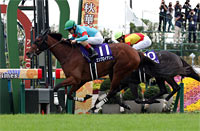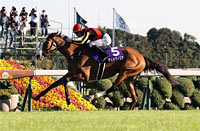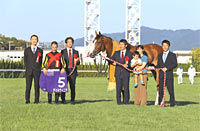2016 News
Data Analysis for the Shuka ShoClash of spring’s top performers and potential new stars Six of the last 10 Shuka Sho winners had already won a JRA G1 race – Oka Sho (Japanese 1000 Guineas) or the Yushun Himba (Japanese Oaks) – in spring of the same year. Compare that to the Kikuka Sho, where only two of the last 10 winners – Orfevre in 2011 and Gold Ship in 2012 – had similar experience of winning a JRA G1 race in the same year. These two races are much alike, in that they both represent the final hurdle to Triple Crown glory for 3-year-olds (one for fillies, the other for colts). But compared to the Kikuka Sho, winners of the “1st crown” (the Oka Sho) and the “2nd crown” (the Yushun Himba) have been more prominent in the Shuka Sho. So will the outstanding performers from the spring again show their mettle this year? Or will one of the new contenders leap straight to victory? This time, let’s look back at changing trends from results over the last 10 years to find some points shared in common by successful runners in this race. No wins by runners with nine or more career starts [Table 1] Performance by career starts (last 10 years)
Check the finish and course condition last time out Of 20 Top 2 finishers over the last 10 years, 19 had finished “In the Top 5” in their previous outing (the exception being 2008 winner Black Emblem). By contrast, those with finishes of “6th or lower” have struggled, achieving only a Top 2 ratio of 1.4% and a Top 3 ratio of 5.5%. [Table 2] [Table 2] Performance by finish last time out (last 10 years)
If we narrow this down to the finish last time out when the previous race was “a JRA turf race when the going was firm,” no horse that finished “6th or lower” in those races performed well here. We should perhaps lower our expectations of runners beaten to “6th or lower” in a turf race on firm ground last time out. [Table 3] [Table 3] Performance by finish in the last race when it was a "JRA turf race when the going was firm" (last 10 years)
Dominance of runners with good records at Kyoto and Hanshin Racecourses Of 30 Top 3 finishers over the last 10 years, 27 already had experience of finishing in the Top 2 in a race held at Kyoto or Hanshin Racecourse. Conversely, fillies without such experience not only have a paltry Top 3 ratio of 4.8%, but have also produced no success at all since 2011, with a record of [0-0-0-30]. It seems we shouldn’t overestimate runners with success only in local or Kanto area (Tokyo, Nakayama Racecourses) racing. [Table 4] [Table 4] Performance by experience of a Top 2 finish in a race at Kyoto or Hanshin (last 10 years)
Look for fillies last seen at Hanshin Of 30 Top 3 finishers over the last 10 years, 23 had most recently contested a race at Hanshin Racecourse. Incidentally, a total of 40 runners have come to this race straight from competing at Nakayama Racecourse, but none of them has finished in the Top 3. [Table 5] [Table 5] Performance by racecourse last time out (last 10 years)
Narrowing the field down to the last four years, 11 of the 12 Top 3 finishers in that time had competed at Hanshin in their previous outing (the exception being 2014 winner Shonan Pandora). So, judging from recent trends as well, it seems we can expect much from runners last seen at Hanshin when comparing the pre-race buildup. [Table 6] [Table 6] Performance by racecourse last time out (last four years)
The “final spurt” last time out is key Ten of the 12 Top 3 finishers in the last four years had been ranked “In the Top 3” in their (estimated) time over the final three furlongs last time out. In fact, horses ranked “In the Top 3” there have achieved outstanding success ratios, including a Top 3 ratio of 40.0%. Up to 2011, runners ranked “4th or lower” in the (estimated) time over the final three furlongs last time out also performed well here, but if our focus is on recent trends, we should be looking for horses with an excellent “final spurt” in their most recent outing. [Table 7] [Table 7] Performance by ranking of (estimated) time over the final three furlongs last time out (last 4 years)
Seek out the winner! A good record in big Kansai races is important All of the last four winners had previously experienced a Top 2 finish in “Open-class races held at Kyoto or Hanshin Racecourse.” Other features shared by these four are that they all came with eight or fewer career starts, had all been ranked in the Top 3 in their (estimated) time over the final three furlongs last time out, and had all been among the Top 4 favorites last time out. When looking for a winner, we should focus on the runners’ open-class record at Kyoto and Hanshin, the trends outlined in Table 1 and Table 7, and their favoritism to win their previous race. [Table 8] [Table 8] Winners' "Highest finish in open-class races at Kyoto or Hanshin", "Career starts", "Ranking in estimated time over the final three furlongs last time out" and "Favoritism last time out" (last four years)
(Masaya Ibuki) |
|



















